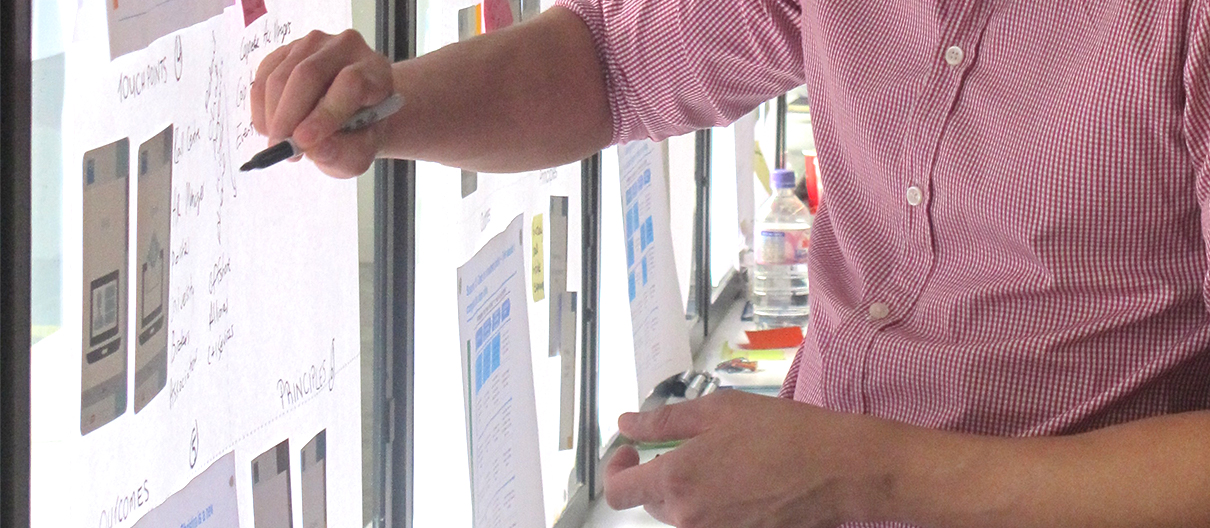Use experience journeys to create value
A journey map is a visual story of a customer’s experience over time with a service, product, organisation or system. A current state and future state experience journey can be created for any of the relationships within your value chain, but more often than not focuses on your customers, employees, or intermediaries. It provides a sequential and holistic view of the end-to-end experience your customer has with your organisation, product, service or channel. It depicts the customer experience in a holistic way, considering needs and expectations, touchpoint interactions, and back-end technical and business process, and provides a roadmap of business initiatives for cross-functional groups and product, service and channel leaders.
The journey maps can be built in stages dependent on your organisational priorities. A current stage journey map helps identify breakpoints and items to “fix” in the short-term. It also alludes to more long-term opportunities that can be further explored in a future state journey map.
A future state journey map defines medium-term innovation and long-term strategic innovation opportunities. Both current and future state journey maps can illustrate with consideration for front and back-stage interactions, processes and expectations.
A journey map is informed by customer and business insight and illustrates the stages of an experience, the steps the customer took, channels they utilised, touchpoints they interacted with and who was involved. Journeys are a powerful communication tool for organisations as they not only show the experience the customer has with the organisation but they also illustrate the experiences the customer has with outside of the control of the organisation including the influence of personal networks, social media, competitors and personal research.
Why create an experience journey?
- To help business units form a shared focus, provide clarity to the desired customer experience across channels, and facilitate collaboration.
- They build empathy when used to communicate the end-to-end customer experience journey, supported by real stories to highlight breakpoints and moments of truth.
- They inform holistic decision-making and inform process, system, product, service, and business model design and innovation.
- They are visually large, giving research findings more impact, and making them easier to remember.
- They show how a customer negotiates an interaction and how they experience a brand in it’s entirety.
- They provide guidelines and direction for those responsible for delivery and channel interactions.
- They build support for change and can unify disparate business units and channels.
- They can be used as a training or education tool to show relationships and consequences.
What are the different types?
Current state journey maps
Current state journey maps enable your organisation to draw a clear line from which changes can be planned or drawn and from which progress can be measured. A current stage journey map helps identify breakpoints and items to “fix” in the short-term. They are useful as a project planning and management tool and help facilitate planning of future initiatives and projects. It also can indicate more long-term opportunities that can be further explored through prototypes and concept testing with customers.
Current state journey maps can be created illustrating the front stage journey, or both the front and back stage journey.
Future state journey maps
Future state journey maps enable your organisation to create a desired future state vision of the ideal experience vision for your customers. They help you identify what is possible, what is valuable, and the opportunities that will help you differentiate in the market. Without a clear vision and desired future state experience, changes are often based on what is functionally possible as the market or technology trend arises. This practice often leads to the organisation being a follower rather than a leader, which reduces the opportunity for the organisation to grow.
Future state journey maps can be created illustrating the front stage journey, or both the front and back stage journey.
Front & Backstage journey maps
Front stage journey maps are used to identify, from a customer’s perspective, the points of interaction between a customer and the organisation across channels. It involves mapping out all the various interactions and actions that occur when a customer and company meet, and articulated the artefacts, touchpoints, interactions, breakpoints and customer expectations of a service.
Back stage journey maps are used to map all the back stage components and business systems required to support the delivery of the front stage customer experience. It involves mapping the people, process, systems and artefacts that support the delivery of the experience, and helps the business identify breakpoints and opportunities that affect the customer experience.
How can you use a journey map?
- To inform supporting initiatives across systems architecture, business processes design, product and service design, marketing, communications and training of front-line staff.
- To inform the innovation roadmap and initiatives prioritisation and selection.
- It identifies a prioritised list of capabilities required to deliver the optimum experience. This informs capability building activities, and resource planning.
- To build engagement, empathy and support change across the organisation.
Case studies
 Consumer Directed Care service
Consumer Directed Care service
Research and strategic insights to inform redesign of the home care service delivery model to meet CDC Policy reforms.
 Health care future state design
Health care future state design
Design the future state customer experience of a Health insurance transformation program.

